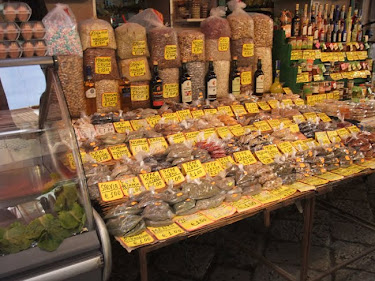Last year I got a call from Romy Fraser who'd recently bought Trill Farm just over the border into Devon, near Axminster. Romy wanted to talk about drying fruit, vegetables and foraged produce on a commercial scale so naturally I said yes and we fixed a date.
The lane down to Trill can take the sump out of your car if you're not careful but as soon as I got past the last pothole I knew the journey was worth it. Trill Farm sits in a secluded valley just a few fields away from Hugh Fearnley-Whittingstall's River Cottage HQ Park Farm and it's beautiful.
Outside the house is a courtyard with lovely old wooden buildings on two sides one of which has been converted into a little reception area and an office for Romy and her team. The third side of the yard is a beautiful old stone barn with just one doorway capped with a carved mullion.
Go through the door and you enter the amazing, cool and dark space of the barn with its high open rood and huge wooden rafters. Stepping out again into the sunlight you see a wood-clad building on your left. Open the last door and you're into the dehydrator.
Unlike the way I started drying which is all about exposing the fruit or vegetables to hot air and ducting the moisture away Romy's setup uses a powerful dehumidifyer to extract moisture. It takes longer than conventional drying but it works. Around the room on the built-in shelves are lovely hand-made wooden boxes deep enough for loads of produce and each with a wire mesh at its base to aid air circulation. Looking into one of the boxes I found dried nettles - just like I used to make!
We talked about what kind of produce I'm looking for to use in Gustosecco products and also what hygiene controls need to be in place. With luck we'll be able to start incorporating real, local dried produce into our products later this year. Bringing provenance into dried foods and getting away from the industrialisation of the industry is a dream for us so fingers crossed we can make this happen.
In any event I really recommend you check out the courses and activities at Trill Farm on their website www.trillfarm.co.uk including their upcoming August family fun event:
Last but not least I still can't get Sicily and its wonderful choice of dried vegetables, fruits, herbs and even fish out of my mind. I'm using the Bottarga I brought back to shave over salads and pasta. Bottarga is wind-dried tuna roe and it's like tasting the sea itself. I've used uve pasolini - tiny Sicilian currants - with pine nuts, fennel fronds from the garden, sardines and bucatini to make pasta con le sarde and based on a recipe from the Greek cookbook Vefa's Kitchen published by Phaidon I've used the glorious datterini variety I bought at the Siracusa market to make fried sundried tomatoes. Delicious - and I'll be sharing the recipe in my next blog.
In the meantime waving a goodbye to and from Sicily are Angela and Francesca with Camilla the dog in their fantastic Siracusan emporium of Sicilian produce including bottarga, wild fennel preserves and pesto, Trapani sea salt and scarlet-red dried cherry tomatoes that I'm going to deep fry for the intrepid Stephen just back from clambering around Sicilian volcanoes. I'll add some chilli since he obviously likes things hot!
























